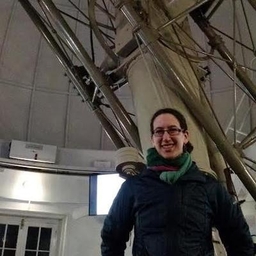
Lisa Grossman
Astronomy Reporter at Science News
Astronomy reporter at Science News. Lifelong astronomy nerd. Queer Jewish mom. Ideas my own. She/her/hers
Articles
-
1 month ago |
sciencenews.org | Lisa Grossman
A Soviet space probe stuck in orbit since a failed 1972 launch is expected to crash to Earth this month. The spacecraft, dubbed Kosmos 482, is predicted to reenter Earth’s atmosphere on May 12, according to a spokesperson for the U.S. Space Force. A different calculation by satellite analyst Marco Langbroek at Delft Technical University in the Netherlands predicts reentry on May 10. The exact landing site won’t be known until shortly before impact.
-
2 months ago |
sciencenews.org | Lisa Grossman
You may have already seen the headlines: Signs of life have reportedly been discovered on an alien world. A team of astronomers led by Nikku Madhusudhan of the University of Cambridge used the James Webb Space Telescope to search for interesting molecules in the atmosphere of a planet outside our solar system called K2 18b. The team now says they’ve found molecules that, on Earth, are associated with life, in an abundance that is hard to explain otherwise.
-
2 months ago |
sciencenews.org | Lisa Grossman
The carbon that once warmed Mars’ atmosphere has been locked in its rusty rocks for millennia. That’s the story revealed by a hidden cache of carbon-bearing minerals unearthed by NASA’s Curiosity rover along its route up a Martian mountain. The finding is the first evidence of a carbon cycle on the Red Planet, but also suggests that Mars lost its life-friendly climate because that carbon cycle was slow, researchers report in the April 18 Science.
-
2 months ago |
sciencenews.org | Lisa Grossman
As the Mars rover Perseverance crested the top of Witch Hazel Hill, its operators back on Earth expected amazing things. This area on the western rim of the Jezero crater, along an ancient river delta that Perseverance has been exploring since it landed in 2021, is thought to contain some of the oldest rocks on the planet’s surface. The light-toned, layered materials promise a record of a wetter time, possibly one that hosted life.
-
Mar 28, 2025 |
snexplores.org | Carolyn Wilke |Stephen Ornes |Lisa Grossman |Sarah Zielinski
Smartphones are helping chart an erratic region of Earth’s atmosphere that can mess with navigation systems and other tech. That region is the ionosphere — a sea of charged particles on the edge of outer space. There, the sun’s radiation cooks gases in the air. This rips electrons off neutral atoms and molecules, creating free-roaming charged particles. Levels of these charged particles shift with changing sunlight and solar activity.
Try JournoFinder For Free
Search and contact over 1M+ journalist profiles, browse 100M+ articles, and unlock powerful PR tools.
Start Your 7-Day Free Trial →X (formerly Twitter)
- Followers
- 9K
- Tweets
- 8K
- DMs Open
- No